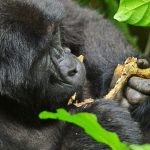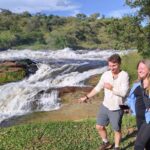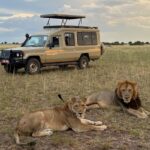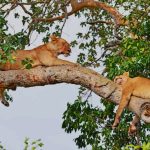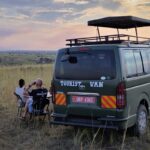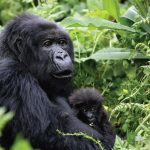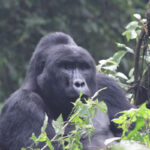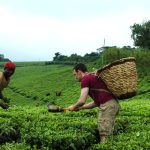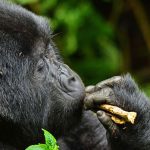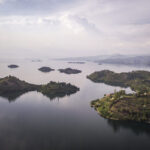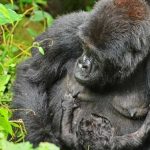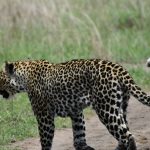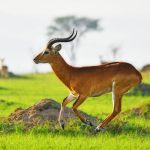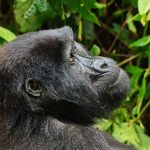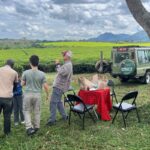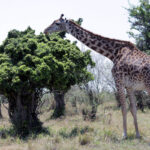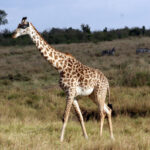How Difficult is Chimpanzee Tracking in Rwanda?
Chimpanzee tracking in Rwanda is an exhilarating and rewarding experience, offering a rare opportunity to observe one of humanity’s closest relatives in their natural habitat. Nyungwe National Park, located in the southwestern part of Rwanda, is home to a significant population of chimpanzees, and it’s here that travelers embark on their journey into the forest. However, despite the thrill of the experience, chimpanzee tracking can be physically demanding. Understanding the difficulties involved can help travelers prepare and ensure they have a safe and enjoyable adventure. In this article, we will explore the challenges involved in chimpanzee tracking in Rwanda and how it compares to other wildlife tracking experiences, such as gorilla trekking.
Overview of Chimpanzee Tracking in Rwanda
Rwanda is often associated with gorilla trekking, especially with its famous Volcanoes National Park, home to the endangered mountain gorillas. However, chimpanzee tracking is an equally captivating experience, offering visitors a chance to observe chimpanzees in one of Africa’s most biodiverse rainforests—Nyungwe National Park. With over 1,000 square kilometers of forest, Nyungwe is one of Africa’s oldest rainforests, boasting an array of primates, birds, and plant species.
Chimpanzee tracking in Rwanda involves hiking through dense forest, navigating hilly terrain, and relying on expert guides and trackers to locate the chimpanzee troops. While the experience is undoubtedly rewarding, it can also be physically and mentally challenging due to the forest’s rugged environment and the unpredictable movements of the chimpanzees.

The Terrain: Challenging and Rugged Paths
One of the most notable challenges of chimpanzee tracking in Rwanda is the terrain. Nyungwe National Park is characterized by steep hills, thick vegetation, and muddy paths, making the trek demanding, especially for those who are not accustomed to hiking. The forest’s dense canopy, combined with the occasional heavy rainfall, results in slippery and muddy trails that can be difficult to navigate.
The park’s geography further complicates the trek. The chimpanzees are not confined to one specific area, which means that trekkers may need to ascend or descend steep inclines to follow the chimps. Some trails can be challenging, requiring trekkers to climb over obstacles such as fallen logs or boulders. Additionally, parts of the forest are often wet and marshy, which can make the journey slower and more strenuous.
For travelers in good physical condition, the terrain might be a challenging but manageable aspect of the trek. However, for those who are less physically fit or have mobility issues, the rugged paths can become quite demanding.
The Duration of the Trek: Unpredictability and Endurance
While the typical chimpanzee tracking experience in Rwanda can last between 3 to 6 hours, the duration can vary significantly. The time spent tracking is influenced by the distance between the starting point and the chimpanzee group, the movement patterns of the chimps, and the physical conditions of the forest.
Chimpanzees are highly mobile, often moving quickly through the forest in search of food, and their location can be difficult to predict. As a result, trekkers may have to walk for hours to find the group. The difficulty comes from the fact that there is no guarantee of how long it will take to find the chimpanzees. On a good day, you may come across them within an hour or two, but on other occasions, the trek could take much longer.
The experience of tracking chimpanzees, therefore, requires a combination of patience and endurance. Trekkers may find themselves walking for hours, and this physical exertion can be mentally challenging as well. The unpredictability of the time spent in the forest adds to the difficulty of the experience, requiring trekkers to be flexible and prepared for a long day in the forest.
Physical Fitness: Required Level of Endurance
The level of physical fitness required for chimpanzee tracking in Rwanda is moderate to high. Trekking through Nyungwe National Park requires both stamina and agility. Travelers should be prepared to hike for long hours, often at a steady pace, over challenging and sometimes muddy terrain. The journey might also involve some steep climbs and descents, requiring trekkers to be in reasonable physical condition to handle the demands of the forest.
While chimpanzee tracking is not as physically intense as gorilla trekking (which requires climbing volcanoes at high altitudes), it still demands a fair level of endurance. The high humidity and heat can add to the physical difficulty, so it is advisable to come prepared with plenty of water, appropriate footwear, and lightweight clothing that allows for easy movement. Wearing the right hiking shoes with good grip is crucial in preventing slips and injuries.
The Weather: A Potential Challenge
Another factor that can make chimpanzee tracking more difficult is the unpredictable weather in Nyungwe National Park. Rwanda has a tropical climate, and rain is common throughout the year. While the wet season is typically from March to May and October to December, it can rain at any time of the year, and the forest becomes very slippery after rainfall.
The humid conditions can also make trekking more exhausting, especially for those not accustomed to walking in hot and muggy climates. The unpredictable nature of the weather means that trekkers should always be prepared for rain. Waterproof clothing and a good rain jacket are essential, as they help ensure that trekkers remain comfortable and dry during their hike.
Comparison with Gorilla Trekking: A Different Challenge
Both chimpanzee tracking and gorilla trekking in Rwanda offer unique experiences, but they differ in terms of difficulty. Gorilla trekking typically takes place in Volcanoes National Park, which is known for its mountainous terrain and high altitudes. While the altitudes can make gorilla trekking physically demanding, the trails are generally shorter and more defined compared to the dense, rugged paths of Nyungwe National Park.
In terms of effort, gorilla trekking often requires trekkers to ascend or descend steep volcano slopes. However, the paths are clearer and less slippery compared to those in Nyungwe. The most significant difference is the altitude—trekking at high altitudes can make it more challenging for some individuals to breathe comfortably, especially if they are not accustomed to high-elevation environments.
Chimpanzee tracking, on the other hand, is more unpredictable, requiring trekkers to navigate through dense forest and uneven terrain. Although the actual hike may not take place at high altitudes, the challenge of the jungle—with its mud, dense vegetation, and unpredictability—can make it feel more strenuous than gorilla trekking for some individuals.

Preparing for the Trek: Tips for Overcoming the Challenges
While chimpanzee tracking in Rwanda presents challenges, these can be mitigated with proper preparation:
- Physical Preparation: Before embarking on the trek, it’s important to engage in light to moderate hiking or cardiovascular exercises to ensure your body is prepared for the physical demands of the trek.
- Proper Gear: Wear sturdy, comfortable hiking boots with good grip to navigate slippery paths. Bring waterproof clothing, insect repellent, and a hat to protect against rain and sun.
- Hydration and Nutrition: Carry enough water to stay hydrated, and pack light snacks to maintain energy levels. Trekking in the humid forest can be exhausting, and staying nourished and hydrated will help you keep your stamina up.
- Mental Preparation: The trek may take several hours, and the time spent tracking chimpanzees is unpredictable. It’s important to maintain patience and stay positive, as the journey can be just as rewarding as the destination.
Conclusion: The Reward of the Trek
Chimpanzee tracking in Rwanda, while physically demanding, is an incredibly rewarding experience for nature enthusiasts and wildlife lovers. The difficulty of the trek is due to the forest’s rugged terrain, unpredictable weather, and the chimpanzees’ mobility. However, with adequate preparation, the experience becomes not only manageable but also an unforgettable adventure. The joy of encountering a chimpanzee troop in their natural habitat, observing their complex social behaviors, and immersing oneself in the beauty of Nyungwe’s rainforest is a once-in-a-lifetime experience that makes every challenge worthwhile.
By understanding the physical demands of the trek, visitors can better prepare themselves and fully enjoy the adventure, making the journey into Rwanda’s wilderness one of the most thrilling and enriching wildlife experiences on the African continent.

